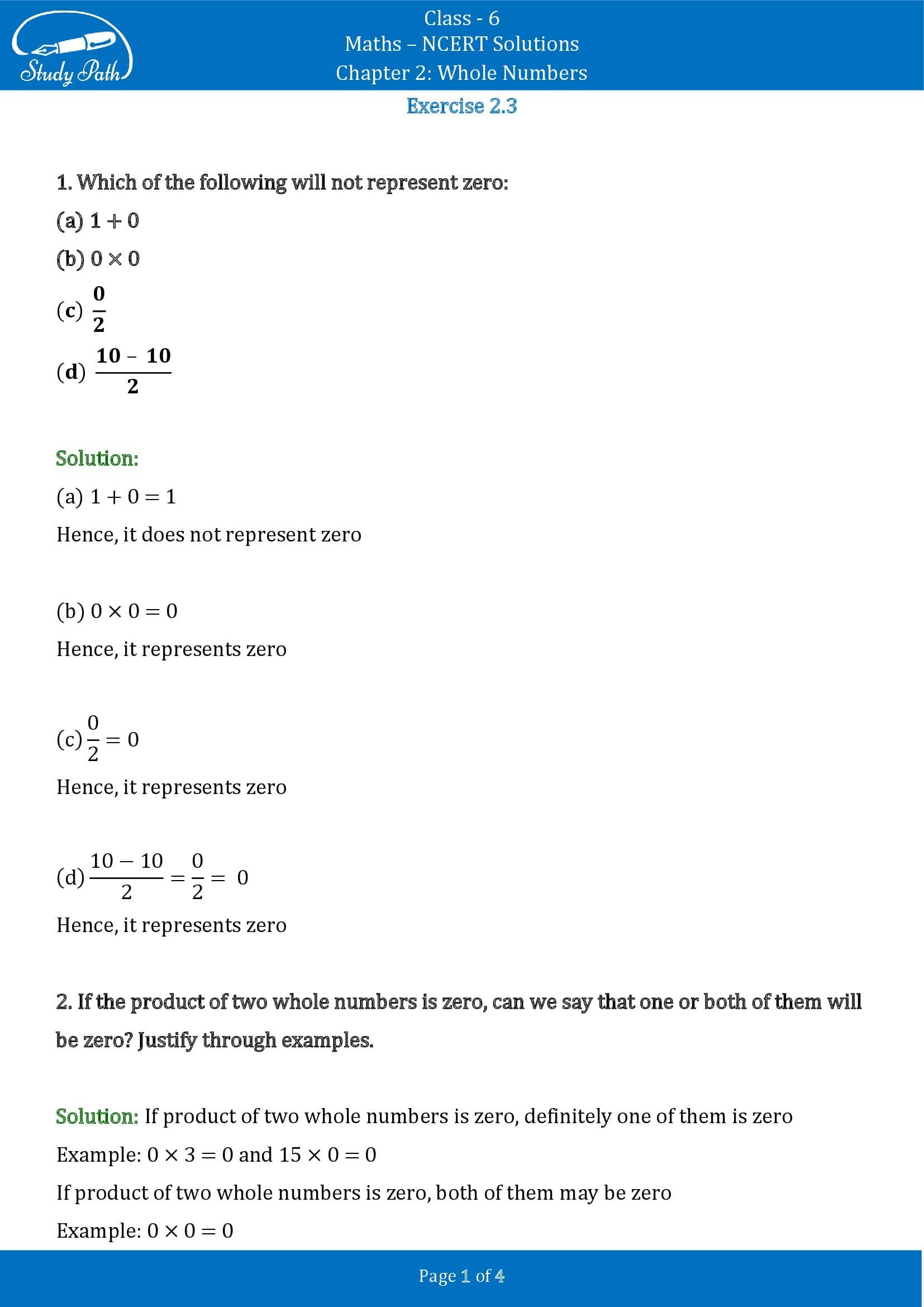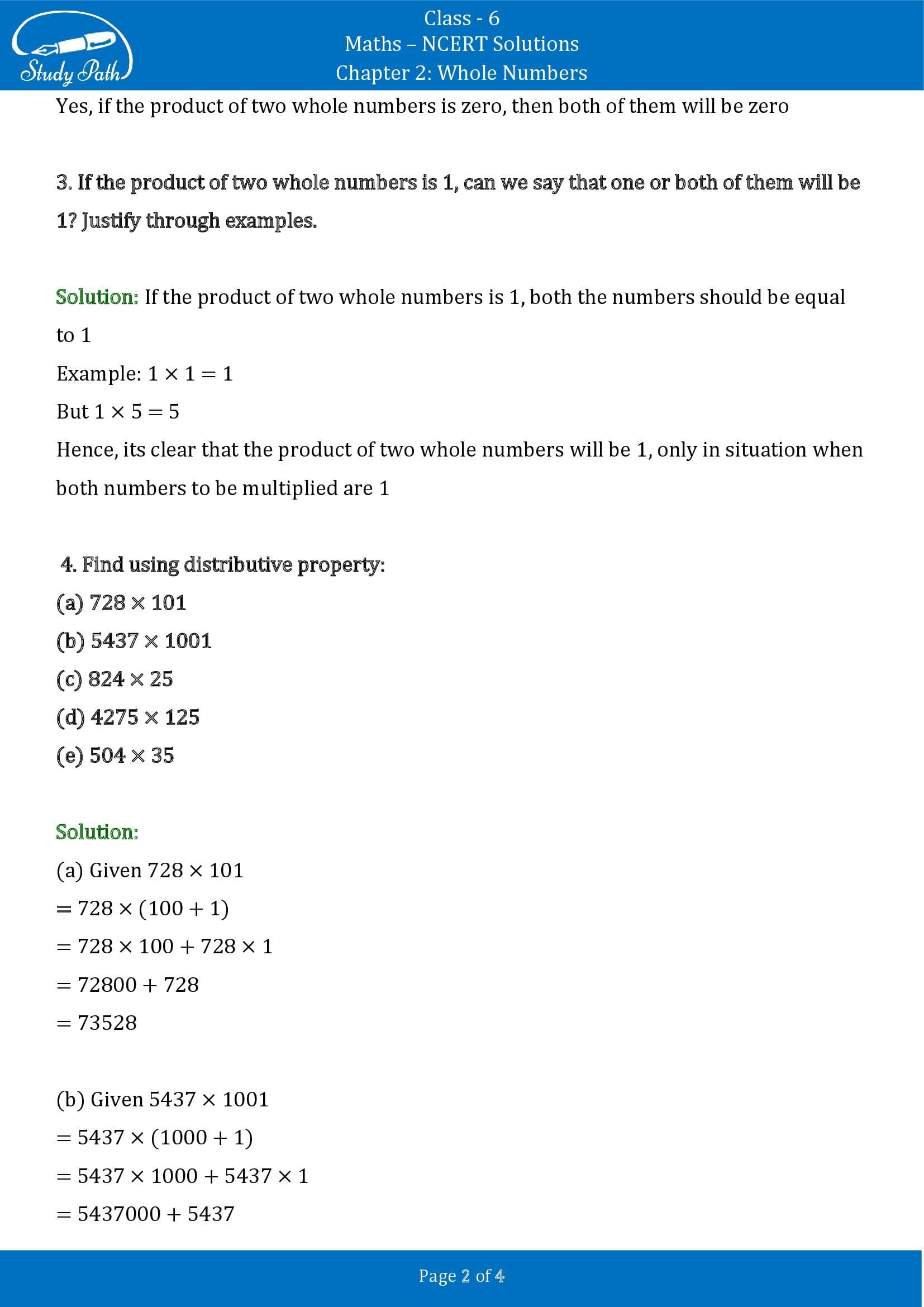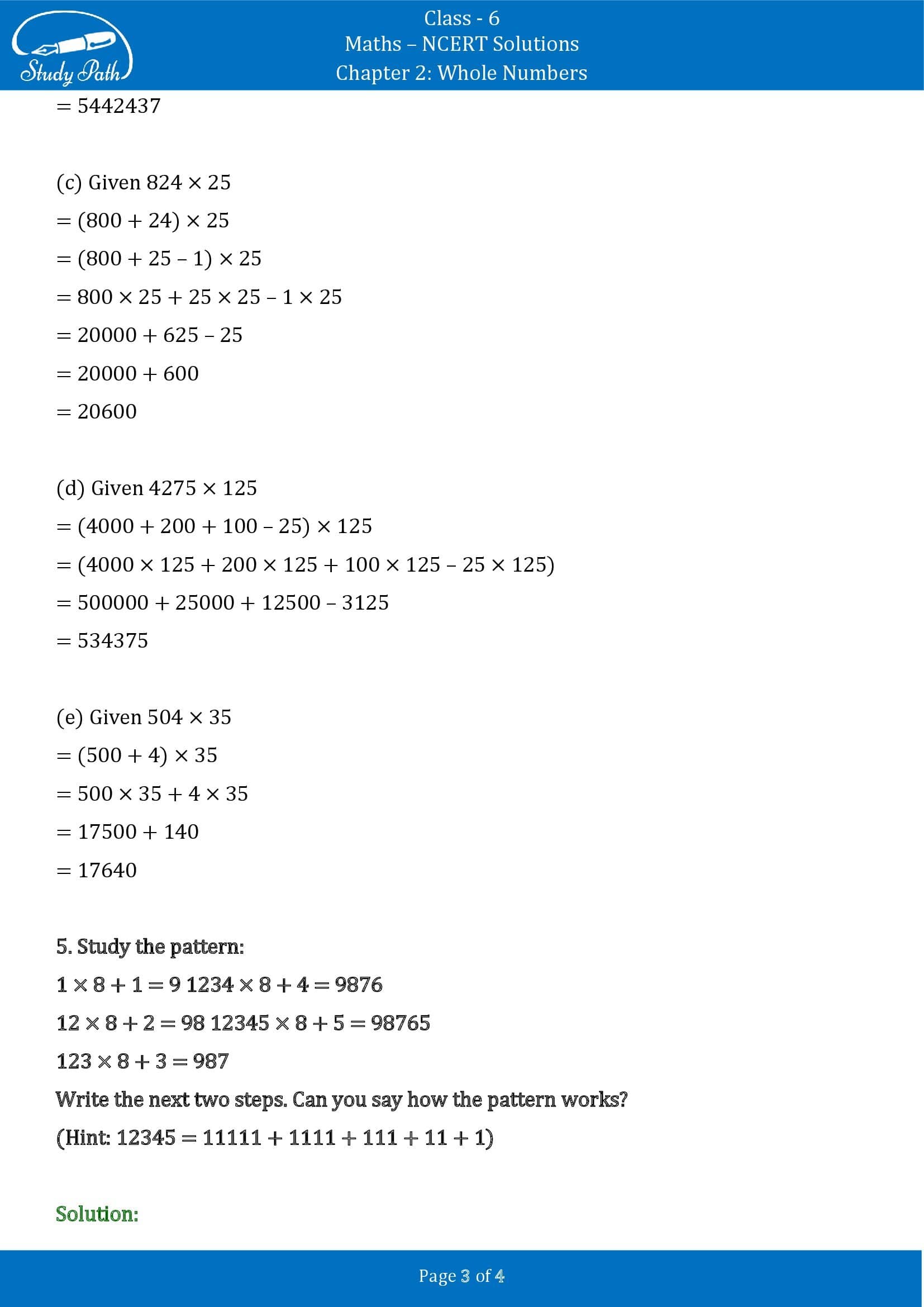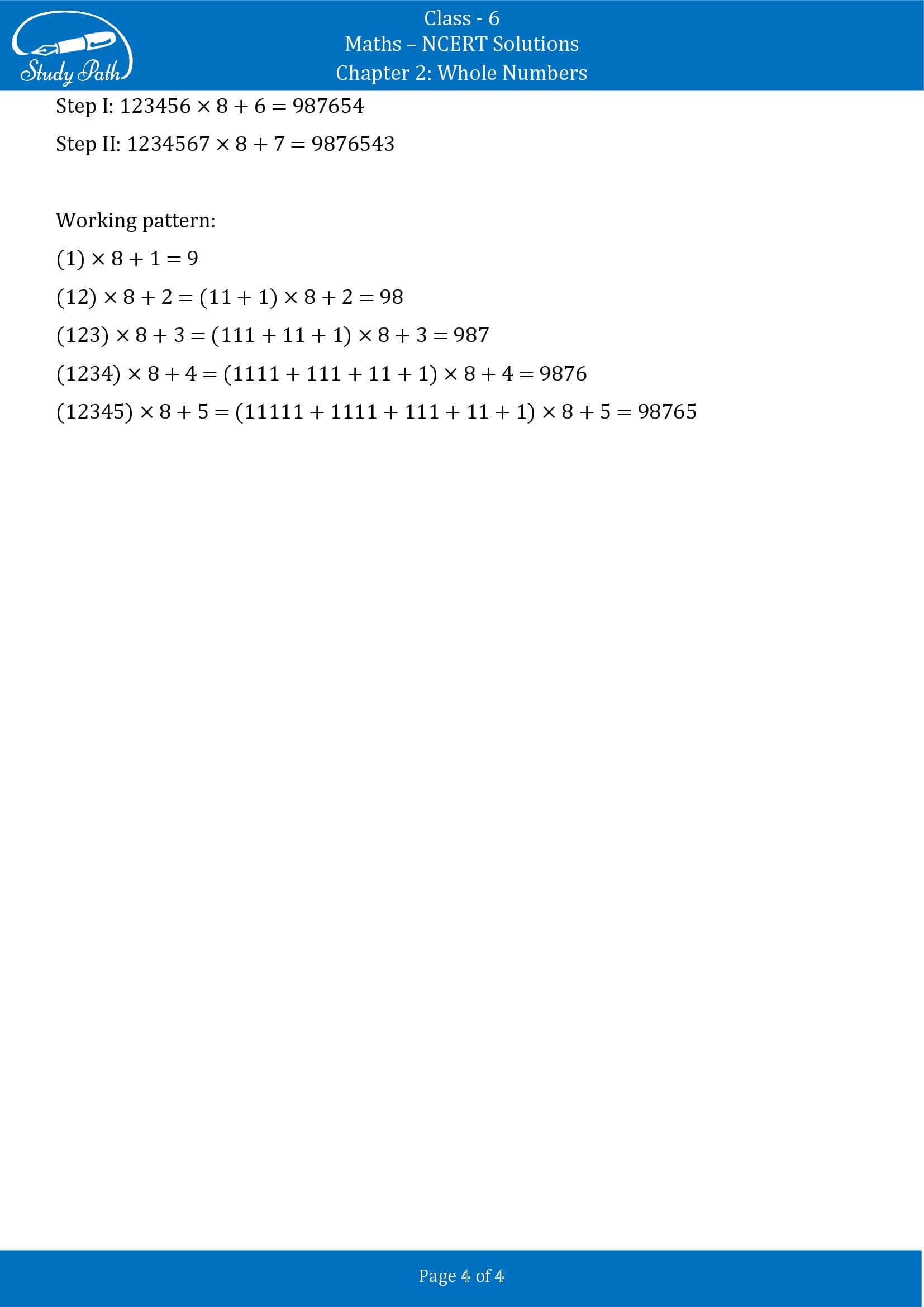NCERT Solutions Class 6 Maths Chapter 2 Whole Numbers Exercise 2.3 are provided here. These solutions are prepared by expert teachers to guide you in your exam preparation. The solutions are always prepared by following NCERT guidelines, so that it covers the whole syllabus accordingly. Our CBSE Class 6 Maths Solutions Chapter 2 Exercise 2.3 Solutions are very helpful in scoring well in examinations.
NCERT Solutions for Class 6 Maths Chapter 2 Whole Numbers Exercise 2.3




Exercise 2.3
1. Which of the following will not represent zero:
(a) 1 + 0
(b) 0 × 0
(c) 0 / 2
(d) (10 – 10) / 2
Solution: (a) 1 + 0 = 1
Hence, it does not represent zero
(b) 0 × 0 = 0
Hence, it represents zero
(c) 0 / 2 = 0
Hence, it represents zero
(d) (10 – 10) / 2 = 0 / 2 = 0
Hence, it represents zero
2. If the product of two whole numbers is zero, can we say that one or both of them will be zero? Justify through examples.
Solution: If product of two whole numbers is zero, definitely one of them is zero
Example: 0 × 3 = 0 and 15 × 0 = 0
If product of two whole numbers is zero, both of them may be zero
Example: 0 × 0 = 0
Yes, if the product of two whole numbers is zero, then both of them will be zero
3. If the product of two whole numbers is 1, can we say that one or both of them will be 1? Justify through examples.
Solution: If the product of two whole numbers is 1, both the numbers should be equal to 1
Example: 1 × 1 = 1
But 1 × 5 = 5
Hence, its clear that the product of two whole numbers will be 1, only in situation when both numbers to be multiplied are 1
4. Find using distributive property:
(a) 728 × 101
(b) 5437 × 1001
(c) 824 × 25
(d) 4275 × 125
(e) 504 × 35
Solution:
(a) Given 728 × 101
= 728 × (100 + 1)
= 728 × 100 + 728 × 1
= 72800 + 728
= 73528
(b) Given 5437 × 1001
= 5437 × (1000 + 1)
= 5437 × 1000 + 5437 × 1
= 5437000 + 5437
= 5442437
(c) Given 824 × 25
= (800 + 24) × 25
= (800 + 25 – 1) × 25
= 800 × 25 + 25 × 25 – 1 × 25
= 20000 + 625 – 25
= 20000 + 600
= 20600
(d) Given 4275 × 125
= (4000 + 200 + 100 – 25) × 125
= (4000 × 125 + 200 × 125 + 100 × 125 – 25 × 125)
= 500000 + 25000 + 12500 – 3125
= 534375
(e) Given 504 × 35
= (500 + 4) × 35
= 500 × 35 + 4 × 35
= 17500 + 140
= 17640
5. Study the pattern:
1 × 8 + 1 = 9 1234 × 8 + 4 = 9876
12 × 8 + 2 = 98 12345 × 8 + 5 = 98765
123 × 8 + 3 = 987
Write the next two steps. Can you say how the pattern works?
(Hint: 12345 = 11111 + 1111 + 111 + 11 + 1)
Solution:
Step I: 123456 × 8 + 6 = 987654
Step II: 1234567 × 8 + 7 = 9876543
Working pattern:
(1) × 8 + 1 = 9
(12) × 8 + 2 = (11 + 1) × 8 + 2 = 98
(123) × 8 + 3 = (111 + 11 + 1) × 8 + 3 = 987
(1234) × 8 + 4 = (1111 + 111 + 11 + 1) × 8 + 4 = 9876
(12345) × 8 + 5 = (11111 + 1111 + 111 + 11 + 1) × 8 + 5 = 98765
Access NCERT Solutions for Class 6 Maths Chapter 2 Whole Numbers – All Exercises
Below we have provided the links to check solutions of the other exercises of the chapter.